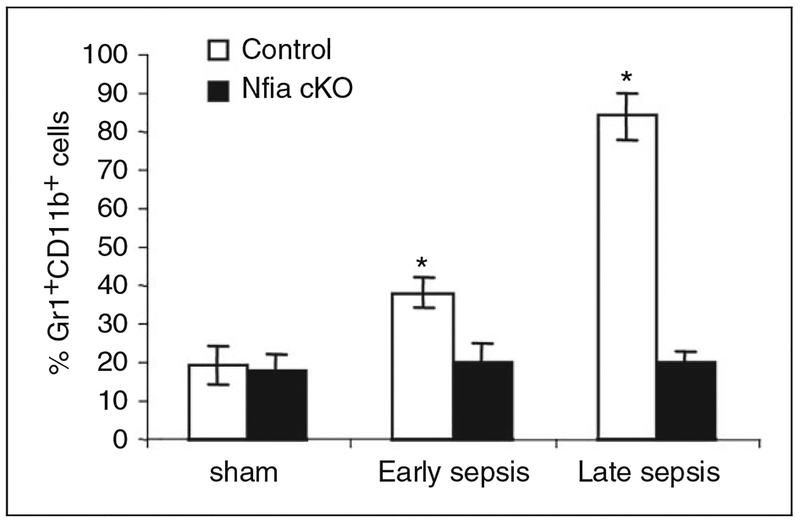Figure 1.
Myeloid-specific deletion of the Nfia gene attenuates Gr1+CD11b+ cell expansion during sepsis. Sepsis was induced by CLP using a 23-G needle, and mice were given antibiotics (imipenem) with fluid resuscitation. With this injury and treatment, sepsis develops into an early phase (defined as d 1–5) and a late phase (d 6 thereafter). Mice that were moribund (control group) during early or late sepsis were subjected to euthanasia. A corresponding number of surviving, healthy-appearing mice (Nfia KO group) were euthanized and analyzed at the same time and are reported here as “surviving.” Bone marrow cells were harvested, stained with anti-Gr1 and anti-CD11b Abs, and analyzed by flow cytometry. Percentages of the Gr1+CD11b+ in the bone marrow are shown. Data are expressed as mean SD (*P < 0.05) of five mice per group and represent one of three experiments. *Compared with conditional knockout (cKO).

